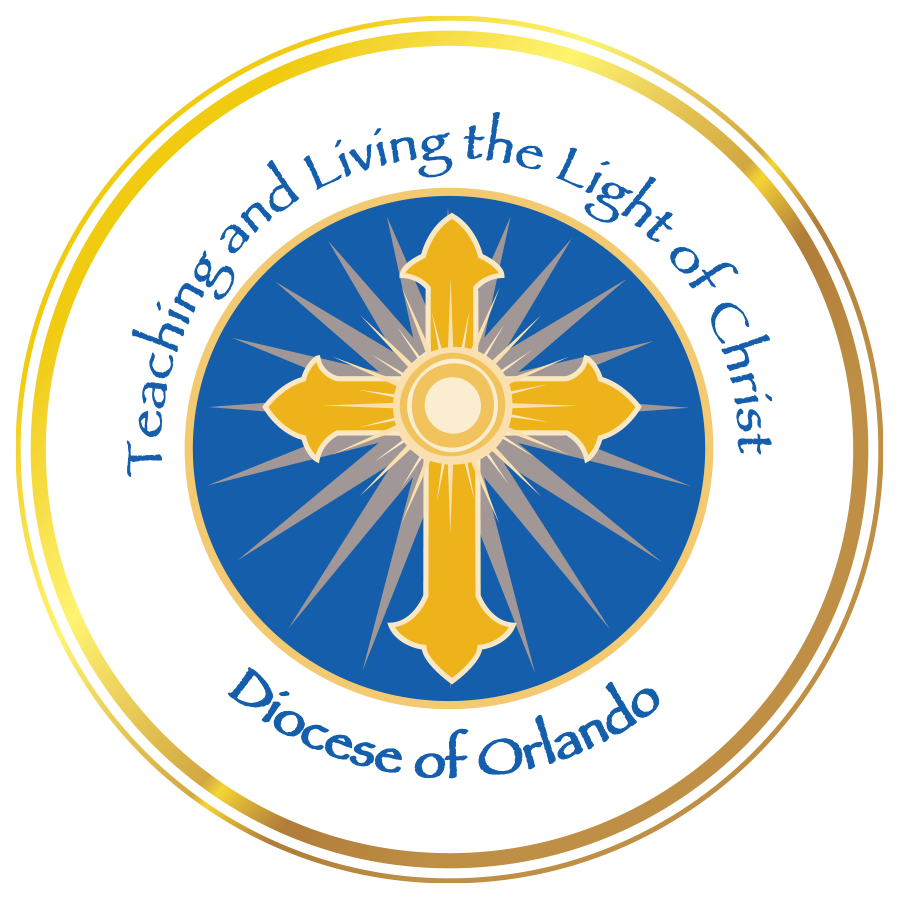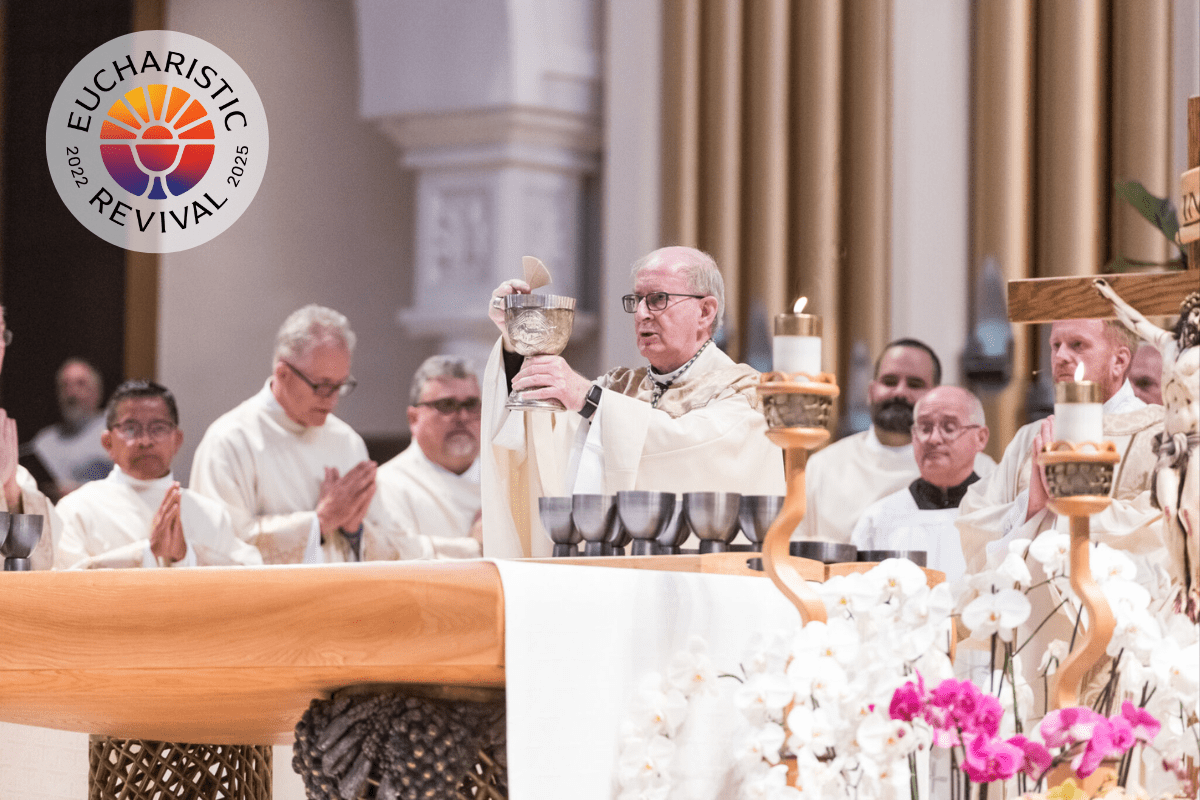The term “transubstantiation” is a scholastic term used by St. Thomas Aquinas and others to help explain the miracle that takes place at Mass. It would be good to start with an example, a person has the “substance” of personhood with “accidents” like weight, hair color, and personality. These “accidents” could change, but the personhood remains at all times.
The Church teaches “transubstantiation,” meaning that the “substance” has changed from bread and wine to the glorified Body and Blood of Christ. At the same time, the “accidents” remain the same as a time-tested explanation for what occurs at Mass during the consecration of the bread and wine. “Accidents” mean that the host continues to taste, look and feel like bread, but the “substance” has become the Body of Christ. The “accidents” of wine taste, color and fluidity remain while its “substance” has become the Body of Christ. This change continues after Mass. That is why the Church reserves the consecrated hosts in the tabernacle, and the hosts can also be adored by placing one in the monstrance for the exposition of the Most Blessed Sacrament.
Yet, for all explanations, words fall short of the mysteries of God. Our language has limitations, and so approximations are the way to help us get closer to the mystery, behold Him and allow Him to behold us.
By Father Jorge Torres, June 21, 2022
(Father Torres of the Diocese of Orlando is also a specialist for the U.S. Conference of Catholic Bishops’ Secretariat for Evangelization and Catechesis in Washington. In this role, he will to help implement the multi-year National Eucharistic Revival.)

